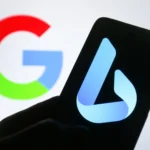Google Glass is making a formidable return to the enterprise scene. As it reappears on the tech stage, here’s everything you need to know about this innovative device. For more information on its comeback story, click here.
With the mention of “Google”, most people’s minds are conjured with images of an immense computer network at the core of the world’s preferred search engine. Although Google is prominently known for its web search engine and Android operating system, it expands far beyond just that – offering a diverse range of products and services. According to Business Insider, “Google has products and services all over the internet that aim to inform users, make their lives easier, and secure too.”
Now enter the intriguing universe of ‘Google Glass’, a wearable Augmented Reality (AR) technology, shaped like standard eyewear. Stylistically, it may resemble the sleek goggles often worn by Olympic swimmers. To better understand the Google Glass, let’s take a look at the detailed description presented in its patent documents.
Described as “An electronic device designed to be worn on the user’s head”, the Google Glass is a feat in innovation and design that incorporates an adjustable frame, a transparent display, and user-friendly input devices.
The design may sound technologically overwhelming but let’s break it down: the Google Glass fits onto the face like traditional glasses. It has a stem that curves around one eye to rest at the side of the head, with a small projection where the transparent screen rests.
The device comprises a battery, control area, speaker, screen projector, and Bluetooth processor all located on one side. The other side optimises stability with no major technical apparatus.
The Google Glass is a remarkable piece of hardware that possesses an exciting array of features right at the user’s eye level. It features a voice activation system that, upon uttering “Okay Glass”, connects the user directly to the Google search engine.
Thanks to its inbuilt applications, Google Glass has the ability to take pictures, record audio, make videos, and capture memories to a remarkable degree, merely with spoken commands. The device’s video recording capability also positions it as a perfect tool for video calls and teleconferencing, adding immense value for professionals.
Furthermore, Google Glass can navigate using a GPS chip, translate foreign languages, live-stream video, and generally enhance the user’s capabilities to near-superhuman levels.
While Google Glass is an excellent example of Augmented Reality (AR) technology, primarily aimed at business-to-business applications in Education, Military, and other sectors, it certainly doesn’t limit your possibilities of enhancing your personal reality. Cue phrase: “OKAY GOOGLE”.
Discover more from TechBooky
Subscribe to get the latest posts sent to your email.







